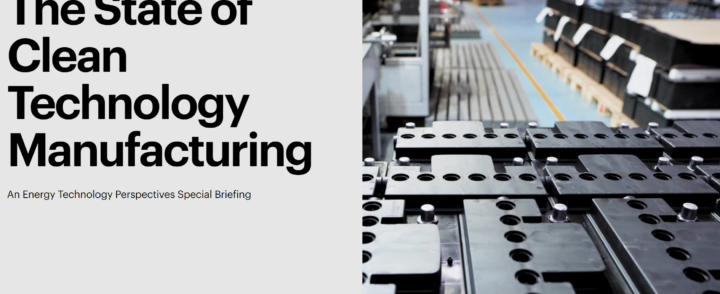The State of Clean Technology Manufacturing
This Energy Technology Perspectives Special Briefing, The State of Clean Technology Manufacturing, provides an update on recent progress in clean energy technology manufacturing in key regions. It focuses on five technologies – solar PV, wind, batteries, electrolysers and heat pumps – that will be critical to the energy transition. Manufacturing capacity for these technologies is expanding rapidly, driven by supportive policies, ambitious corporate strategies and consumer demand. The aim is to keep decision makers informed of investment trends and the impact that recent industrial strategies are having in these highly dynamic sectors.
- Clean energy technology manufacturing is expanding rapidly, driven by supportive policies, ambitious corporate strategies and consumer demand. The global energy crisis has instilled further impetus to develop manufacturing capacity that can strengthen energy security and diversify the supply chain. This Energy Technology Perspectives (ETP) Special Briefing is designed to provide policy makers with strategic insights in this area, focusing on five critical technologies: solar photovoltaic (PV), wind, batteries, electrolysers and heat pumps.
- New manufacturing projects are being announced by the day. In the short time since the last IEA analysis of clean technology manufacturing in Energy Technology Perspectives 2023 (covering announcements through to late 2022), the projected output in 2030 from announced projects for solar PV has increased by 60%, for batteries it has increased by around one-quarter, and for electrolysers by around 20%.
- It is not just announcements that are posting strong growth rates. The latest data available for year-end 2022 show installed manufacturing capacity posted strong year-on-year growth for batteries (72%), solar PV (39%), electrolysers (26%) and heat pumps (13%). Wind manufacturing capacity grew much more modestly at around 2%.
- If all announced projects were to come to fruition, solar PV manufacturing capacity would comfortably exceed the deployment needs of the IEA’s Net Zero Emissions by 2050 (NZE) Scenario in 2030. Even if only half of this new capacity were to be utilised – the global average utilisation rate of solar PV manufacturing capacity in 2022 was slightly over 40% – throughput would still be sufficient to reach demand levels in the NZE Scenario (around 650 GW per year in 2030).
- For the first time, announced projects for battery manufacturing capacity could cover virtually all of the 2030 global deployment needs of the NZE Scenario. Significant gaps remain for wind, where projected throughput from existing capacity and announced projects equates to just under 30% of NZE Scenario deployment levels, electrolysers (just over 60%) and heat pumps (just over 40%). But relatively short lead times – for both announcements and construction – for the factories that supply these technologies imply a more positive outlook than these gaps initially suggest.
Source: IEA



